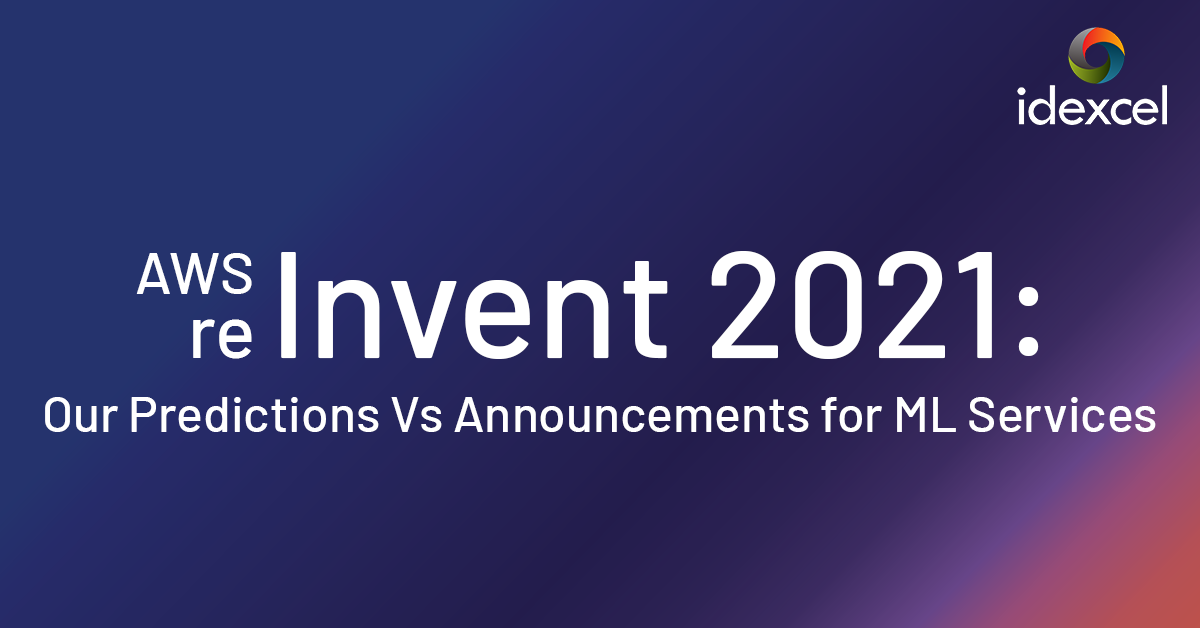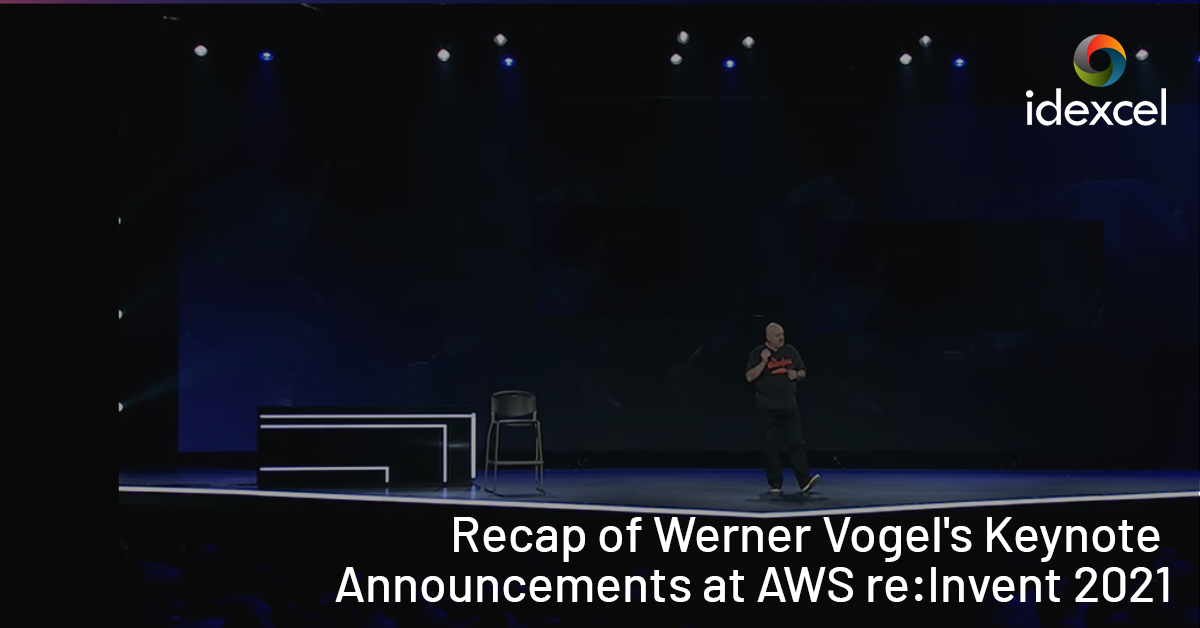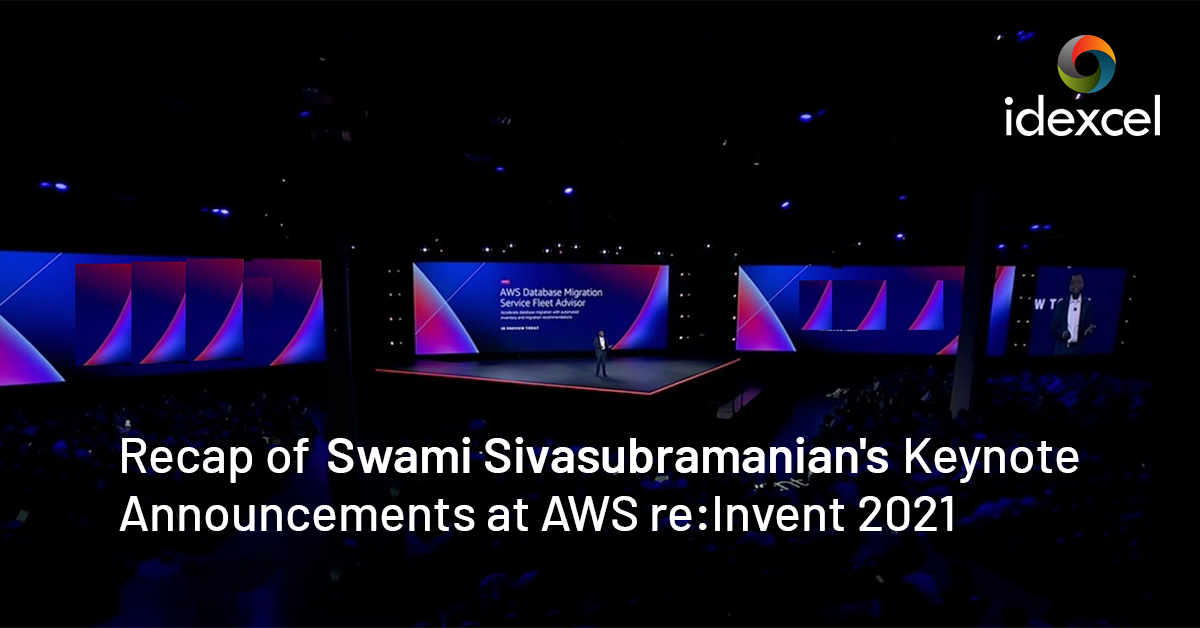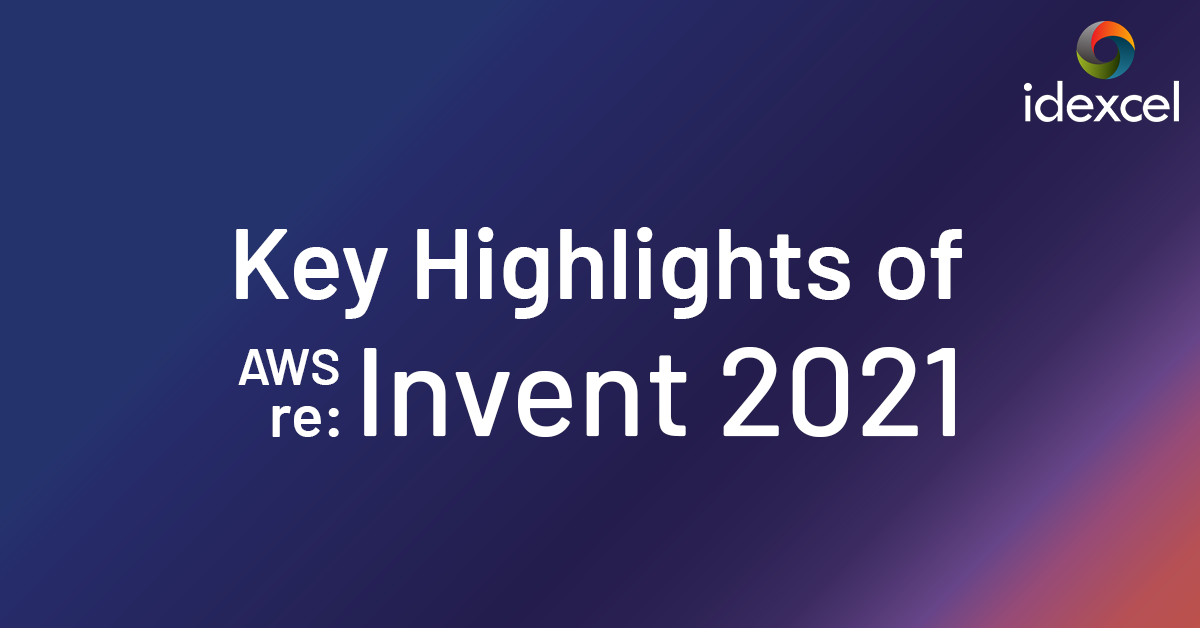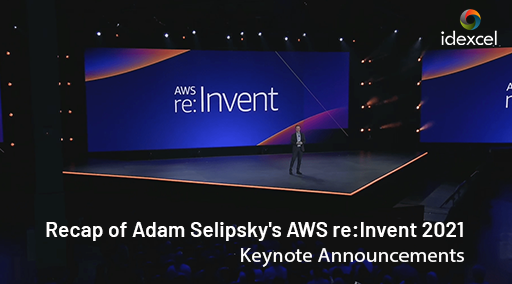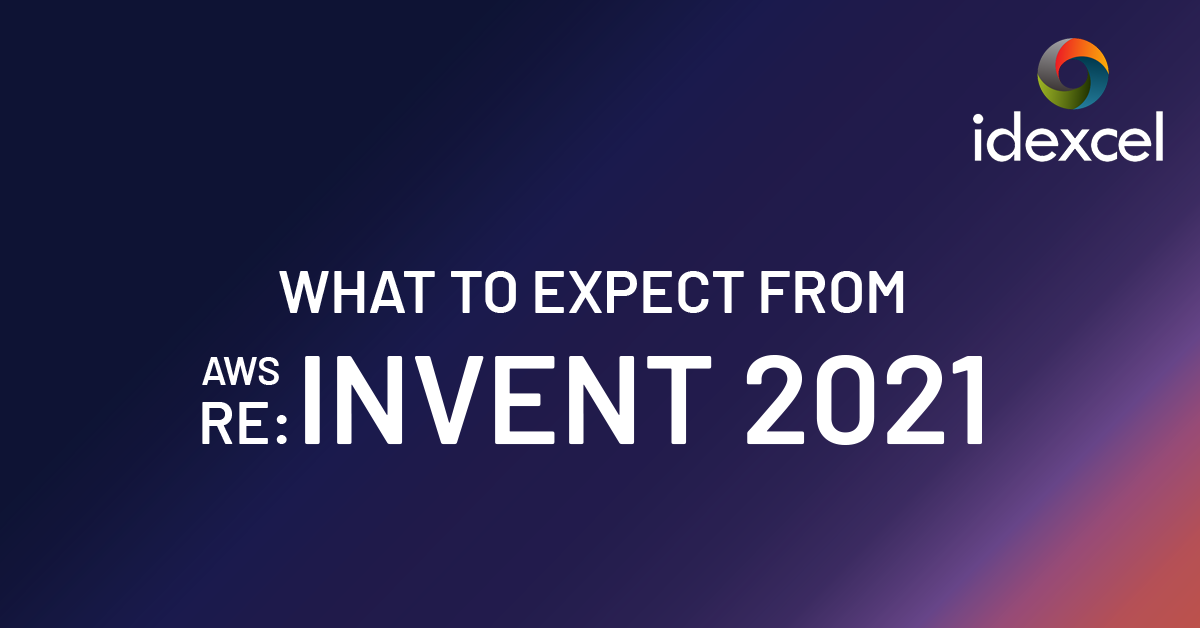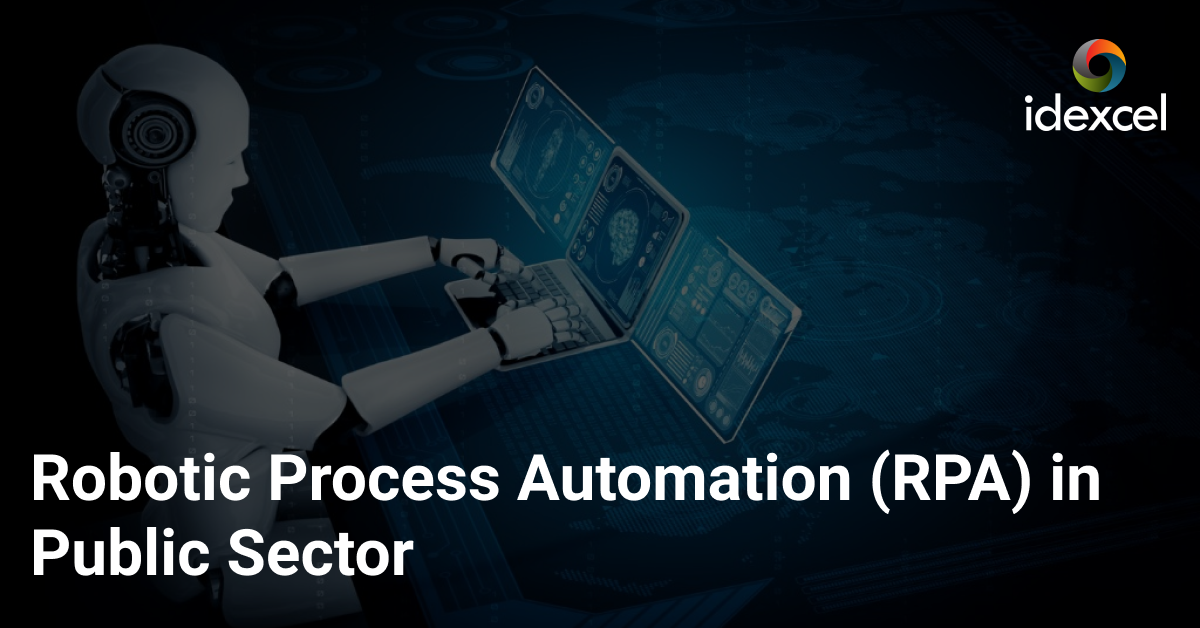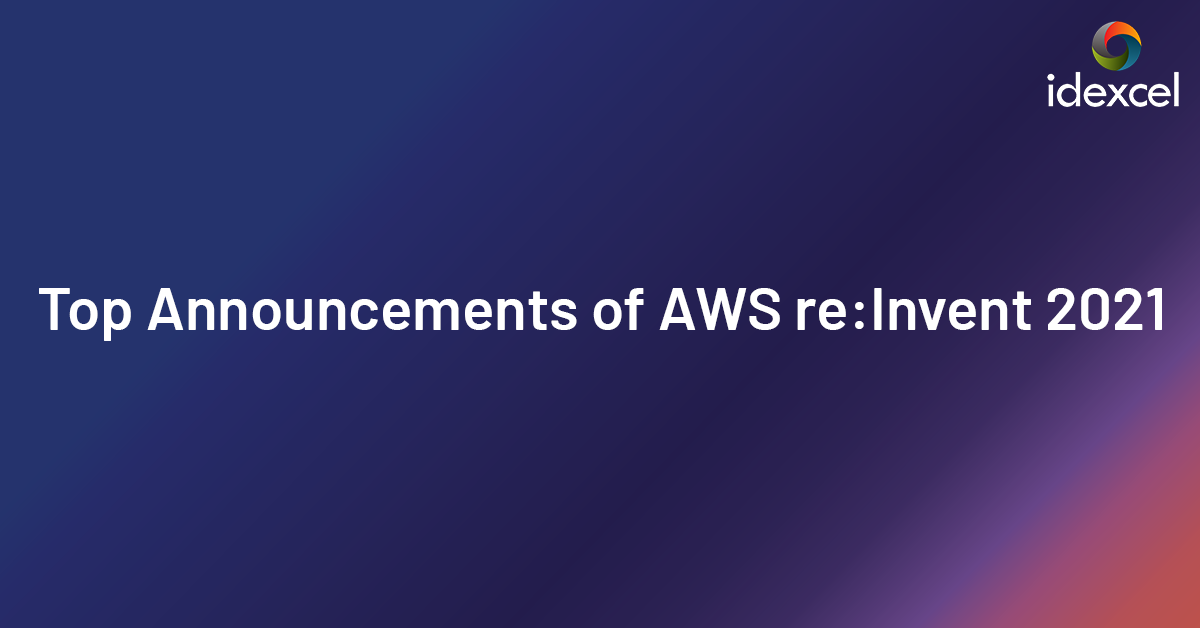
Amazon made several announcements at AWS re:Invent 2021 that include new services and enhancements, whilst their partners fostered their offerings, turning the annual conference into one of the most significant events of the cloud technology marketplace. The following are the top announcements of this year.
1. AWS Private 5G
AWS Private 5G is a new managed service that helps organizations set up and scale private 5G mobile networks in their respective facilities within days instead of months. With the minimal number of clicks in the AWS console, customers define where they want to build a mobile network and the network capacity required for their devices. Subsequently, AWS delivers and maintains the small cell radio units, servers, 5G core, and radio access network (RAN) software, and subscriber identity module (SIM) cards required to build a private 5G network and link devices. Also, AWS Private 5G automates the setup and deployment of the network and scales capacity on-demand to support supplementary devices and enhanced network traffic. There are absolutely no per-device costs or fees to be paid in advance with AWS Private 5G and customers only have to pay for the network capacity and throughput they request.
2. Amazon SageMaker Canvas
Amazon SageMaker Canvas leverages the most powerful AutoML technology from Amazon SageMaker, which spontaneously trains and builds models depending on your dataset. This lets SageMaker Canvas to determine the best model based on your dataset so that you can generate single or bulk predictions. It supports numerous problem types such as binary classification, multi-class classification, numerical regression, and time series forecasting. These problem types allow you to address business-critical use cases, such as fraud detection, churn reduction, and inventory optimization without the need of having to write a single line of code. Also, this capability offers an intuitive user interface to swiftly connect to and access data from contrasting sources and prepare data for building ML models.
3. Amazon DevOps Guru for RDS
Amazon DevOps Guru for RDS is a new capability powered by Machine Learning for Amazon Relational Database Service (RDS) that systematically identifies and diagnoses database performance and operational issues, enabling users to address bottlenecks in minutes instead of days. This feature of Amazon DevOps Guru, uncovers issues related to operation and performance for all Amazon RDS engines and dozens of other resource types. Also, DevOps Guru for RDS extends upon the existing capabilities of DevOps Guru to determine, diagnose and offer correction recommendations for a range of issues related to performance of database, such as resource over-utilization and misbehavior of SQL queries. Whenever an issue arises, DevOps Guru for RDS instantly notifies developers and DevOps engineers by providing diagnostic information, info on the extent of the issue, and intelligent restoration recommendations to assist customers to promptly resolve the issue.
4. Amazon SageMaker Ground Truth Plus
Amazon SageMaker Ground Truth Plus enables users to create high-quality training datasets with ease, with no need to build labeling applications and manage the labeling workforce on your own. Consequently, you don’t even need to have deep expertise in Machine Learning or extensive knowledge of workflow design and quality management. You simply provide data together with labeling requirements and Ground Truth Plus sets up the data labeling workflows and manages them on your behalf in concordance with your requirements. Also, this latest service uses a multi-tier labeling workflow that includes ML techniques for active learning, pre-labeling and machine validation. This reduces the time required to label datasets for a range of use cases which include computer vision and natural language processing.
5. New EC2 instances featuring Trn1 and Graviton3 Processors
AWS Trainium-based Amazon EC2 Trn1 instances deliver the best price-performance for training deep machine learning models in the cloud for use cases like natural language processing, object detection image recognition, recommendation engines, intelligent search, etc. They support up to 16 Trainium accelerators, 800 Gbps of EFA networking throughput, and ultra-high speed intra-instance connectivity for the quickest ML training in Amazon EC2. These instances are deployed in EC2 UltraClusters that can be scaled to tens of thousands of Trainium accelerators with petabit scale and non-blocking networking. These Trn1 UltraClusters are 2.5x bigger than the former generation EC2 UltraClusters and assist as a powerful supercomputer to quickly train the most complicated deep learning models.
AWS Graviton3 Processors are the latest addition to the Graviton family of processors which are tailor-made by AWS to provide the best price-performance for workloads in Amazon EC2. They offer up to 25% better compute performance, 2x higher floating-point performance, and 2x faster cryptographic workload performance when compared to AWS Graviton2 processors. Also, Graviton3 processors render up to 3x better performance in comparison to Graviton2 processors for CPU-based machine learning workloads, along with additional support for bfloat16 and fp16 instructions. Furthermore, they support pointer authentication for improved security besides always-on 256-bit memory encryption available in AWS Graviton2.
6. Karpenter – An Open-Source High-Performance Kubernetes Cluster Autoscaler
Karpenter is an open-source, resilient, high-performance Kubernetes cluster autoscaler created with AWS. It helps improve the application availability and cluster efficiency of users by swiftly launching appropriately sized compute resources in response to the dynamic application load. Also, this autoscaler offers compute resources in a timely manner to meet your application’s requirements and will soon instinctively optimize a cluster’s compute resource footprint to minimize costs and enhance performance. Karpenter is created to work with any Kubernetes cluster irrespective of the running environment, comprising of all principal cloud providers and on-premises environments. As Karpenter is installed in a user’s cluster, it inspects the aggregate resource requests of unscheduled pods and generates decisions to institute new nodes and terminate them to minimize scheduling latencies and infrastructure expenses.
7. AWS Amplify Studio
This new visual development environment offers frontend developers with features to expedite the development of UI with minimal coding, whilst integrating Amplify’s powerful backend configuration and management capabilities. AWS Amplify Studio spontaneously translates designs made in Figma to human-readable React UI component code. Developers can now visually connect the UI components to app backend data within Amplify Studio. With regard to configuring and managing backends, Amplify Admin UI’s present capabilities will be part of Amplify Studio moving forward, offering an integrated interface to empower developers to build full-stack applications quicker. Furthermore, to speed up the UI development process, Amplify Studio provides developers a React UI library with several components such as newsfeeds, contact forms, and e-commerce cards.
8. Amazon Mask Severless (in preview)
This is a new type of Amazon MSK cluster that makes it simpler for developers to run Apache Kafka without needing to manage its capacity. Amazon MSK Serverless spontaneously provisions and scales compute and storage resources and provides throughput-based pricing, so that you can utilize Apache Kafka on demand and pay only for the data you stream and retain. With minimal clicks in the AWS management console, users can set up secure and highly available clusters that automatically scale as your application I/O scales. MSK serverless enables users to run existing applications without needing to change code or create new applications using prominent tools and APIs, as it is fully compatible with Apache Kafka. Also, this cluster supports native AWS integrations that offer capabilities like private connectivity with AWS PrivateLink, safe client access with AWS Identity and Access Management (IAM), and schema evolution control with AWS Glue Schema Registry.
9. Amazon EMR Serverless (in preview)
This is a new serverless option in Amazon EMR that makes it simple and economical for data engineers and analysts to run petabyte-scale data analytics in the cloud. As you are aware, Amazon EMR is a cloud big data platform utilized by customers to run large-scale distributed data processing jobs, interactive SQL queries, and machine learning applications using open-source analytics frameworks like Apache Hive, Apache Spark, and Presto. Now with the introduction of Amazon EMR Serverless, customers can run applications built with the aid of these frameworks with minimal clicks, without needing to configure, optimize and secure clusters. EMR Serverless instinctively provisions and scales the compute and memory resources needed by the application, and customers have to only pay for the resources they utilize. Also, with EMR Serverless, users need to just specify the open-source framework and version that they wish to use for their application and submit jobs using EMR Studio, API’s or JDBC & ODBC clients.
10. AWS Cloud WAN Preview
AWS Cloud WAN is a new managed wide-area networking (WAN) service that makes it easier for users to create, manage and track any global network that connects resources running across their cloud and on-premises environments. This service provides a simple way to link all your data centers, branch offices, and cloud resources into an integrated, centrally managed network, minimizing the operational costs and complexities involved with running a global network. Furthermore, with Cloud WAN, users can utilize a centralized dashboard and network policies to build a global network that covers multiple locations and networks, ultimately eliminating the need to individually configure and manage different networks using diverse technologies. As Cloud WAN automatically creates a global network across AWS Regions using the Border Gateway Protocol (BGP), users can now easily exchange routes round the globe.
Schedule a meeting with our AWS Cloud Solution Experts and accelerate your cloud journey with Idexcel.
